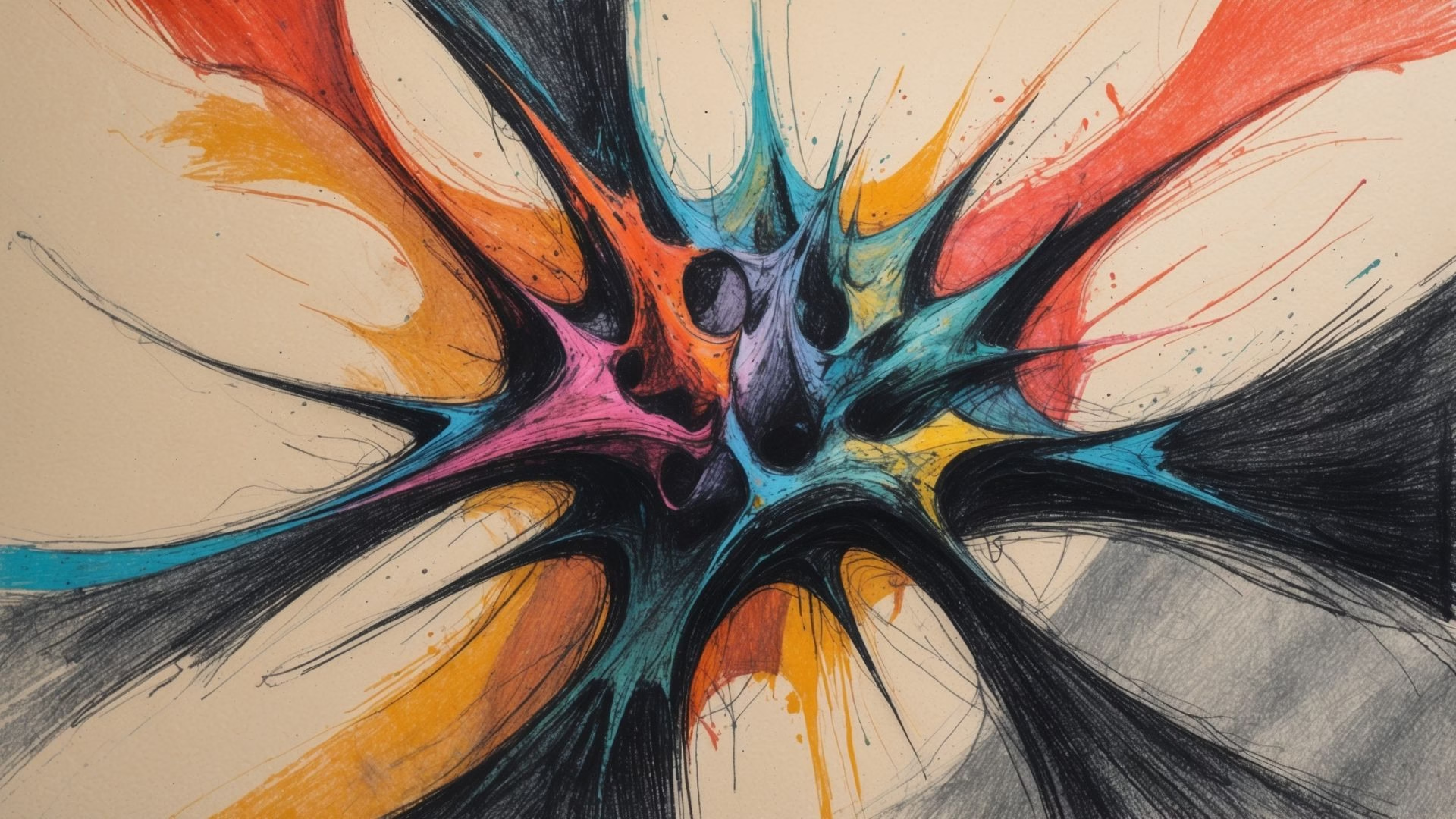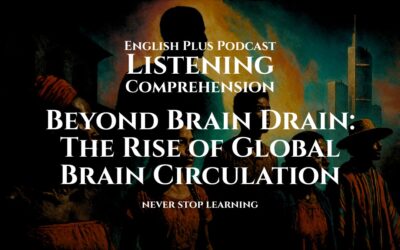Mastering the Abstract: An English Listening Practice on Modern Art
Welcome! Listening tasks in international exams often feature lectures from the arts and humanities. These can be challenging because they deal with abstract ideas, opinions, and the evolution of styles. Unlike a science lecture with concrete facts, an art history lecture requires you to understand the why behind the art—the philosophies, the rebellions, and the new ways of seeing the world.
To succeed with this type of listening, try these tips:
- Listen for Schools of Thought: Art history is organized into movements or “isms” (Impressionism, Cubism, Surrealism). The speaker will describe the key features of each. Your job is to tell them apart.
- Understand the “Why”: Don’t just listen to what the artists did, but why they did it. Was it a reaction against an older style? Was it inspired by a new scientific theory? The motivation is key.
- Track Opinions and Attitudes: The lecturer will use descriptive and sometimes subjective language. Listen for adjectives that describe a style (e.g., “chaotic,” “serene,” “emotive”) to understand the lecturer’s interpretation.
Today’s listening is a university lecture on the birth of Modern Art. It explores how and why artists started to break the traditional rules of art. Let’s begin.
Listen
Listening Quiz
Listening Transcript: Please do not read the transcript before you listen and take the quiz
Hello, everyone. Today, we’re going to tackle a subject that many people find intimidating, but which is also one of the most exciting periods in cultural history: the birth of Modern Art. When we say ‘Modern Art,’ we’re generally referring to a period of artistic experimentation that began in the mid-19th century and lasted until about the 1960s. The core idea that unites this incredibly diverse period is a deliberate rejection of the past. It was a rejection of the idea that art must be a realistic, representational window onto the world.
For centuries, going back to the Renaissance, the gold standard in European art was academic tradition. This tradition dictated that great art should depict historical, mythological, or religious subjects in a highly polished, realistic style. The goal was to create a convincing illusion of three-dimensional reality on a two-dimensional canvas. But by the 1860s and 70s, a group of young, rebellious artists in Paris started to question this. They felt that this rigid, formal style didn’t capture the reality of modern life. They were the Impressionists.
Led by figures like Claude Monet, the Impressionists moved out of the studio and into the open air. They weren’t interested in painting a perfect, static image. Instead, they wanted to capture the fleeting, sensory ‘impression’ of a moment. They used visible brushstrokes, unblended colors, and focused on the changing effects of light. When Monet painted a cathedral, he didn’t paint the building itself; he painted the light hitting the building at a specific time of day. This was a radical departure. The critics of the time were horrified; they called their work unfinished, messy, a mere sketch. But the Impressionists had opened a door: they had made the artist’s subjective experience, their personal perception, the true subject of the art.
This paved the way for the Post-Impressionists, like Vincent van Gogh and Paul Cézanne. They took the Impressionists’ ideas and pushed them further. Van Gogh, for instance, used color not for realism, but for raw emotion. His swirling, intense brushstrokes in a painting like ‘The Starry Night’ are not how the world looks, but how it felt to him. Cézanne, on the other hand, was obsessed with structure. He believed that nature could be reduced to basic geometric forms—the cylinder, the sphere, the cone. By breaking down objects into these fundamental shapes, he began to flatten the perspective of the canvas, challenging the illusion of depth that had dominated art for 500 years.
This breakdown of traditional perspective reached its logical and explosive conclusion with Cubism in the early 20th century, pioneered by Pablo Picasso and Georges Braque. If Cézanne cracked the mirror of reality, Picasso shattered it completely. Cubist painters abandoned the idea of a single, fixed viewpoint. Instead, they depicted a subject from multiple viewpoints simultaneously. Imagine walking around a person and seeing their face from the front, from the side, and from above, and then collapsing all of those views into a single, fragmented image. This was the zeitgeist of the early 20th century—a time when Einstein was revolutionizing physics and Freud was exploring the subconscious. The old, stable view of reality was crumbling, and Cubism was its artistic expression.
From here, the floodgates of abstraction were open. Artists began to believe that art didn’t need to represent anything in the external world at all. This led to purely abstract, or non-representational, art. Movements like Suprematism in Russia and De Stijl in the Netherlands used simple geometric shapes and primary colors to create works of what they considered pure form and feeling.
In essence, the journey of Modern Art is a journey inward. It’s a shift from an objective depiction of the shared, outer world to a subjective expression of the artist’s inner world. It was a subversive and liberating movement that fundamentally changed our definition of what art could be. It asked viewers not just to see, but to feel and to think, challenging them to engage with the work on a personal, intellectual level. Modern Art didn’t just break the rules; it created a whole new game.
Advanced Vocabulary and Phrases
- Representational: An adjective for art that aims to depict the physical appearance of things. A painting of a person that looks like a person is representational.
- How we used it: Modern Art was a rejection of the idea that art had to be representational.
- Subjective: An adjective meaning based on or influenced by personal feelings, tastes, or opinions. It’s the opposite of objective.
- How we used it: Impressionism made the artist’s subjective experience—their personal view—the main point of the artwork.
- Radical departure: A noun phrase that means a complete and dramatic break from a previous tradition or method.
- How we used it: The Impressionists’ style was a radical departure from the polished, academic art that came before it.
- Pioneer (verb): In this context, to pioneer something means to develop or be the first to use or apply a new method, area of knowledge, or activity.
- How we used it: Picasso and Braque pioneered the new style of Cubism.
- Zeitgeist: A noun from German that means the defining spirit, mood, or ideas of a particular period in history.
- How we used it: The lecture described Cubism as being part of the zeitgeist of the early 20th century, along with the new ideas from Einstein and Freud.
- Abstraction: A noun referring to the quality of dealing with ideas rather than events. In art, it means freedom from representational qualities.
- How we used it: The lecturer said that after Cubism, the “floodgates of abstraction were open,” leading to art that didn’t represent the real world at all.
- Subversive: An adjective describing something that seeks or intends to subvert or overthrow an established system or institution.
- How we used it: Modern Art was a subversive movement because it sought to overthrow the established traditions and rules of the art world.
- Dominated: The past tense of the verb to dominate, meaning to have a commanding influence on; exercise control over.
- How we used it: The illusion of depth had dominated art for 500 years, meaning it was the most powerful and controlling principle for centuries.
- Fleeting: An adjective that means lasting for a very short time.
- How we used it: The Impressionists wanted to capture a fleeting moment, like the way sunlight looks on water for just a second.
- Intimidating: An adjective describing something that makes you feel frightened or nervous.
- How we used it: The lecturer acknowledged that Modern Art can be intimidating for some people because it’s so different from traditional art.










0 Comments